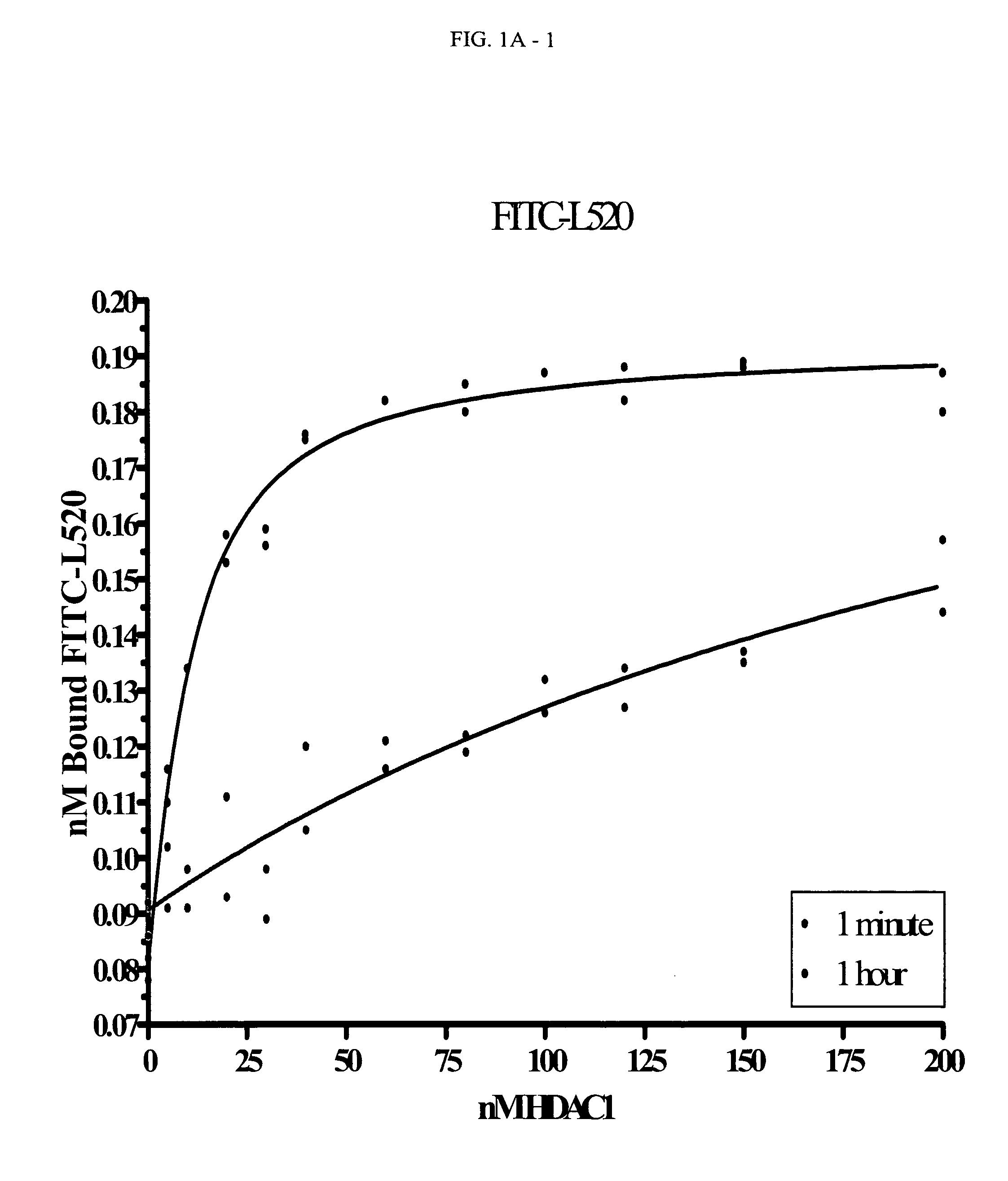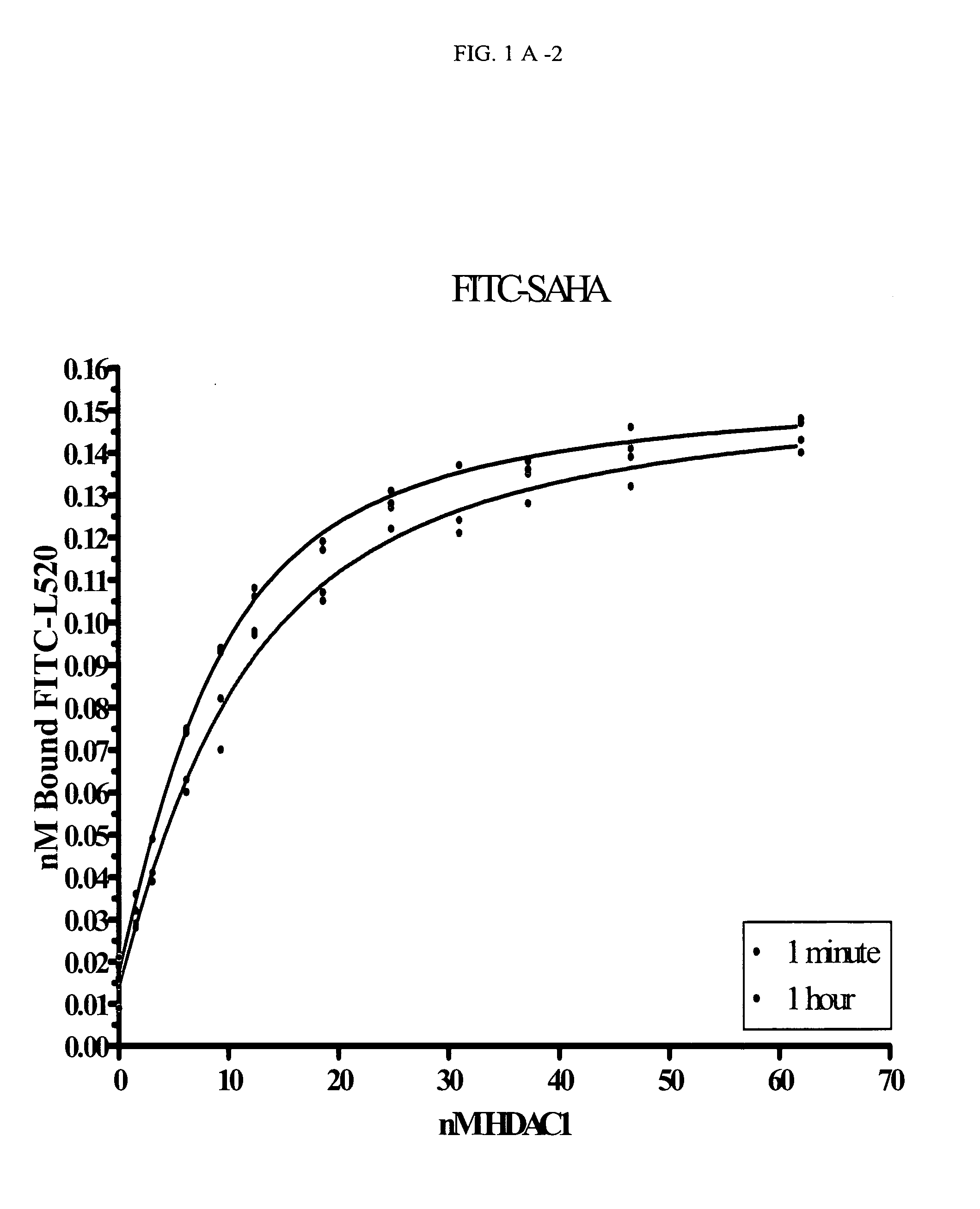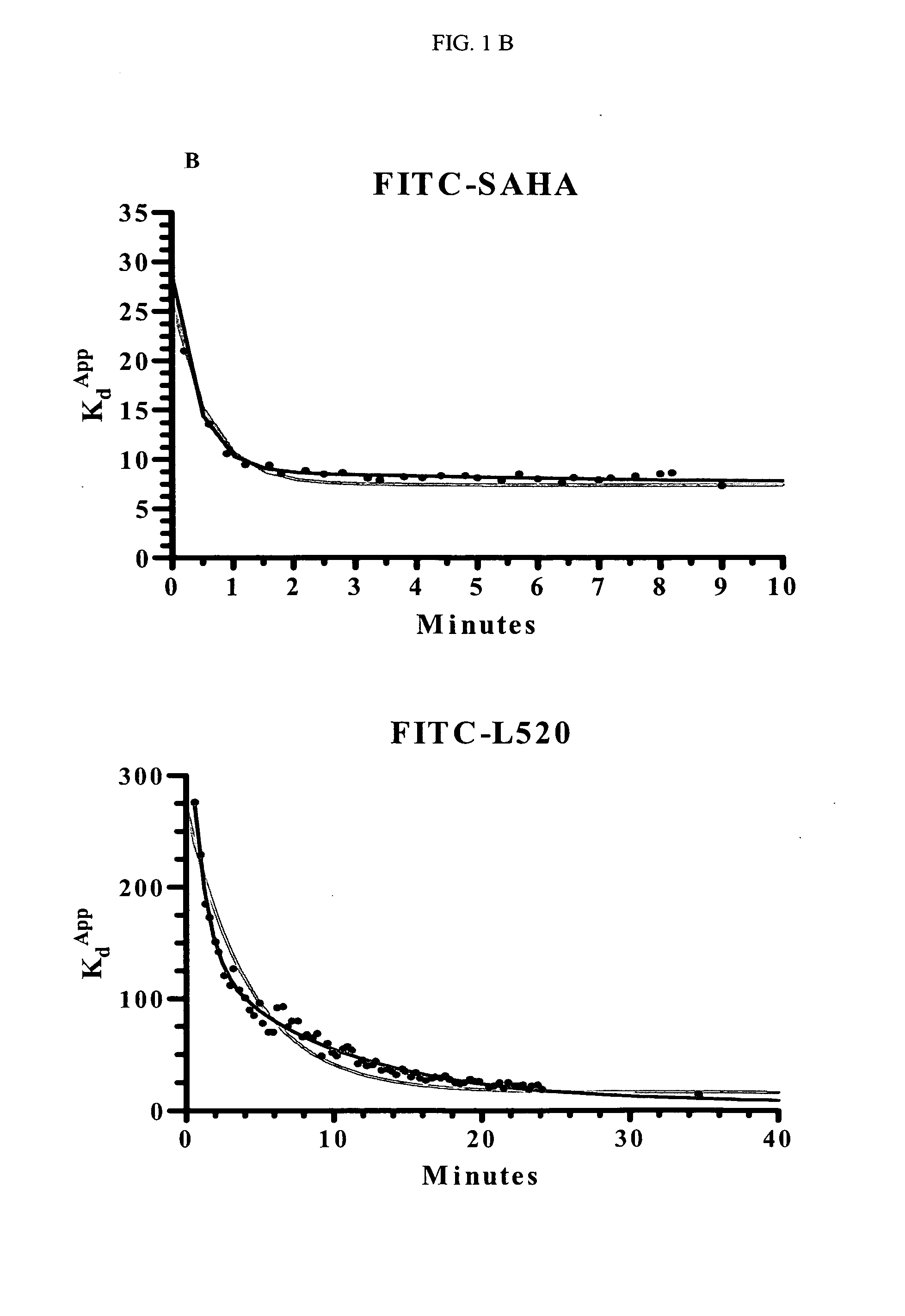Fluorescent compounds that bind to histone deacetylase
a technology of histone deacetylase and fluorescence compounds, applied in the field of fluorescence compounds, can solve the problems of inability to complete differentiation, excessive proliferation of leukemic cell lines, and loss of accuracy,
- Summary
- Abstract
- Description
- Claims
- Application Information
AI Technical Summary
Problems solved by technology
Method used
Image
Examples
example 1
Synthesis
[0166]
[0167]Methyl-8-[(4-{[(tert-butoxycarbonyl)amino]methyl}phenyl)amino]-8-oxooctanoate. tert-Butyl (4-aminobenzyl)carbamate (3.0 g, 13.5 mmol) was made 0.25 M in anhydrous DCM and to this stirring solution was added Pyridine (1.6 g, 20.2 mmol) followed by methyl 8-chloro-8-oxooctanoate (2.8 g, 13.5 mmol). The resulting solution was stirred at ambient temperature and reaction progress was monitored by LC / MS. The reaction mixture was stirred for 16 hours then diluted with ethyl acetate and washed with aq 1N HCl. The organic layer was again washed with aqueous 1N HCl, brine then dried over anhydrous MgSO4 and concentrated in vacuo to give the title compound as a white solid. cal'd [M+H]+ 393, exp. 393
[0168]N-[4-(aminomethyl)phenyl]-N′-hydroxyoctanediamide. Methyl-8-[(4-{[(tert-butoxycarbonyl)amino]methyl}phenyl)amino]-8-oxooctanoate (2.0 g, 5.1 mmol)) was made 0.25 M in MeOH and to this stirring solution was added hydroxylamine (0.2 g, 6.1 mmol) followed by 5N potassium hyd...
example 2
Fluorescence Assays
[0180]Binding Studies Performed with the FITC-Labeled Compounds:
[0181]Kd Determination of FITC-Labeled Compounds
[0182]Titrations of HDAC1 were set up in 96-well black, flat-bottom plates. The concentrations of HDAC1 varied from 5 to 200 nM (with COMPOUND 1 and COMPOUND 2) or 20 to 450 nM (with COMPOUND 3). At time zero, the FITC-labeled compound was added and the plate inserted into the Analyst HT for FP detection. The samples were read every 5 seconds through ˜10 minutes (COMPOUND 1) or 2 hours (COMPOUND 2 and COMPOUND 3). The data at each time point was converted from mP to 1 nA units and plotted in Prism using an equation for ligand binding taking ligand-depletion into consideration (Equations 1-3) (An example of which is given in FIG. 1A).
C=Lt+Rt+Kd(Equation1)Bound=C2Lt-C2-4LtRt2Lt(Equation2)Signal(Y)=Af+Bound*(Ab-Af)(Equation3)
where Lt is total fluorescently-labeled compound concentration, Rt is total HDAC concentration, Kd is the dissociation constant for th...
PUM
 Login to View More
Login to View More Abstract
Description
Claims
Application Information
 Login to View More
Login to View More - R&D
- Intellectual Property
- Life Sciences
- Materials
- Tech Scout
- Unparalleled Data Quality
- Higher Quality Content
- 60% Fewer Hallucinations
Browse by: Latest US Patents, China's latest patents, Technical Efficacy Thesaurus, Application Domain, Technology Topic, Popular Technical Reports.
© 2025 PatSnap. All rights reserved.Legal|Privacy policy|Modern Slavery Act Transparency Statement|Sitemap|About US| Contact US: help@patsnap.com



